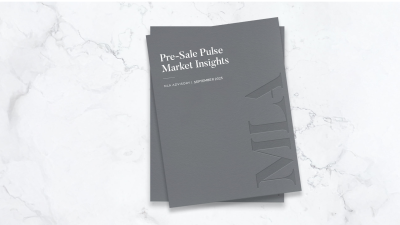In light of rising inflation, increasing interest rates and economic uncertainty in the financial markets, the real estate market performed in line with expectations throughout the month of June. Across Greater Vancouver, the Fraser Valley and Greater Victoria, the resale market continues to reckon and reconcile with the overarching financial pressures. These economic headwinds import a dampened demand and erode the appreciation that the areas’ markets have enjoyed over the last two years. As the industry adjusts, the question on minds is whether the market will settle into a new normal or experience further compression in values. If looking to June for the answers, it’s clear the results will be nothing short of multifaceted and will be variably tied to the submarkets and build-forms in question.
June brought several notable pre-sale launches, including Alina by Strand, Hartley by Porte Homes, Contour by Kirpal Group, and Podium by Whitetail Homes. Recent marketing for upcoming programs such as Anthem’s SOCO Two and the sixth tower in Shape Properties’ Amazing Brentwood suggest that we are likely to see significant concrete launches continue into the Fall of 2022. Perhaps counterintuitively, these launches are good for the market. Despite a drop in housing prices, each submarket in BC is still in dire need of additional housing to meet impending demand.
Greater Vancouver
While home listings are up, sales are down in the Greater Vancouver area. As summer kicked off, prices started to decrease and when coupled with increasing supply and interest rates Metro Vancouver homebuyers entered a changing marketplace. In June, 2,444 resales occurred, which was a 16.2% decline from May and 35% decline from June 2021. Additionally, resales in June were 23.3% below the 10-year average for the month. While significant, the decline can be mainly attributed to decreasing demand for detached housing, which is more sensitive to rising interest rates when compared to other housing forms. To elaborate, detached housing sales were 50.6% below their 10-year average, while condominium and townhome products were only 5.6% above and 0.9% below respectively. Decreasing housing demand has meant increased active inventory within Greater Vancouver. There were 10,425 active listings at the end of June, a decrease of 3.8% from June 2021 but an increase of 4.1% from May 2022. This means that homebuyers have more selection to choose from than they have over the past year, and less pressure to make quick decisions. Listings are accumulating due to more caution being applied. That slowdown on homebuyer activity has put downward pressure on home prices.
Fraser Valley
Similarly, the housing market in the Fraser Valley continued to cool throughout June amid slower sales and softer prices. The overall sales in the area fell for the third straight month as property prices decreased. However, this brings greater balance to the market than has been seen in recent years. The Fraser Valley Real Estate Board noted that condo and townhome markets continue to favour sellers as the sales-to-active listings ratio keeps trending higher – just with fewer multiple-offer bidding wars. Across product types, there was a total of 6,474 active listings in the Fraser Valley at the end of June, an increase of 4.7% from the month prior. With resales totalling 1,281, the Fraser Valley’s sales-to-listings ratio was effectively in ‘balanced’ territory for the first time since May 2020. Like Greater Vancouver, this was predominately from detached product which has experienced the greatest ‘rebalancing’ in terms of supply and demand as of late. With an increasing supply in housing, buyers are taking more time to choose the right home. This has shifted demand conditions and supported softening pricing across the market. The HPI benchmark price for the area was $1,128,400 in June, a 3.3% decline from May which brings the overall benchmark pricing back to where it was at the beginning of the year.
Greater Victoria
Victoria’s super-hot housing market has begun to level off somewhat; like Metro Vancouver, the area has seen market conditions continue to moderate. More inventory entered the market in June, bringing the numbers closer to pre-pandemic 2020 levels. Sales slowed by 18.6% month-over-month and active listings increased by 15.9% over the same period. Still, Victoria’s market continues to see constrained supply. Although inventory is rising, increased supply across all product types is still important for long-term availability. While month-over-month gains in inventory have been positive, the number of active listings remains historically low. This has supported pricing within the market, which was generally positive across product types month-over-month.
Many economists were surprised the Bank of Canada exceeded the usual mirroring of the US Federal Reserve’s interest rate increases. They are now further warning that the combination of higher rates and lowered inventory might prove difficult for first-time buyers, which could slow sales and erase the price gains seen in the past year. While real estate boards across the province maintain that the increased housing supply is slowly correcting, in order to meet long-term housing demands a significant increase in housing supply is critical.



